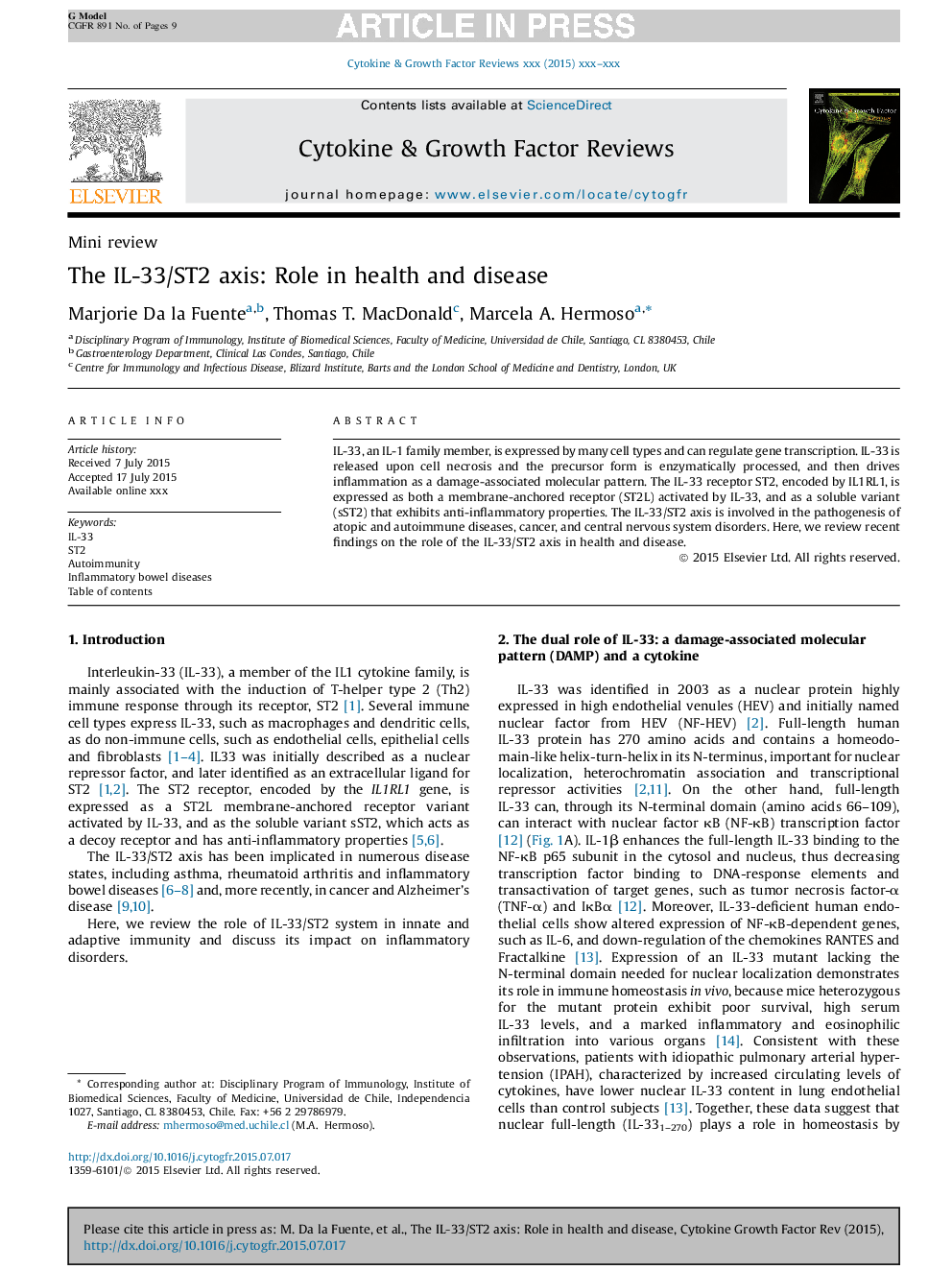| Article ID | Journal | Published Year | Pages | File Type |
|---|---|---|---|---|
| 10930034 | Cytokine & Growth Factor Reviews | 2015 | 9 Pages |
Abstract
IL-33, an IL-1 family member, is expressed by many cell types and can regulate gene transcription. IL-33 is released upon cell necrosis and the precursor form is enzymatically processed, and then drives inflammation as a damage-associated molecular pattern. The IL-33 receptor ST2, encoded by IL1RL1, is expressed as both a membrane-anchored receptor (ST2L) activated by IL-33, and as a soluble variant (sST2) that exhibits anti-inflammatory properties. The IL-33/ST2 axis is involved in the pathogenesis of atopic and autoimmune diseases, cancer, and central nervous system disorders. Here, we review recent findings on the role of the IL-33/ST2 axis in health and disease.
Related Topics
Life Sciences
Biochemistry, Genetics and Molecular Biology
Cell Biology
Authors
Marjorie De la Fuente, Thomas T. MacDonald, Marcela A. Hermoso,
